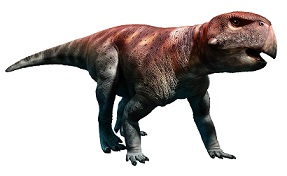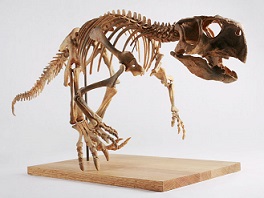
Psittacosaurus, often referred to as the parrot lizard, is a fascinating dinosaur from the Early Cretaceous period, approximately 125 to 100 million years ago. This 500-word exploration will delve into its classification, physical characteristics, habitat, behavior, and its significance in the world of paleontology.
Psittacosaurus is classified as a ceratopsian dinosaur, which is a group of herbivorous dinosaurs characterized by their beak-like mouths and often elaborate frills and horns. However, Psittacosaurus is considered a more primitive ceratopsian, lacking the elaborate cranial ornaments seen in later relatives like Triceratops.
| Name: | Psittacosaurus dinosaurs |
| Size: | Around 3.3 to 6.5 feet in length. |
| Main Facts: | Psittacosaurus had quill-like structures on its tail, suggesting early feathers, and played a pivotal role in ceratopsian dinosaur evolution. |
The first fossils of Psittacosaurus were discovered in the early 20th century in China and Mongolia. These fossils, including remarkably well-preserved specimens, have provided crucial insights into the anatomy and evolution of ceratopsian dinosaurs.

Psittacosaurus was a relatively small dinosaur, measuring about 3.3 to 6.5 feet (1 to 2 meters) in length. Its body was stout and bipedal, with a beak-like snout at the front of its skull. This beak was used for cropping vegetation, suggesting an herbivorous diet.
One of the most distinctive features of Psittacosaurus was its row of quill-like structures along its tail, which some researchers believe may have been precursors to feathers. While these structures likely weren't capable of powered flight, they provide insight into the evolution of feathers.
Psittacosaurus lived during the Early Cretaceous period when much of Asia was a diverse and dynamic ecosystem. Its fossils have been found in various environments, including forests and river floodplains.
As an herbivore, Psittacosaurus primarily fed on a diet of plant material, including ferns, cycads, and other vegetation. Its beak-like snout was well-suited for cropping and processing plant matter.
In terms of behavior, Psittacosaurus is believed to have been a relatively social dinosaur. Fossils of juvenile and adult individuals found together suggest that they may have lived in family groups. This social behavior likely provided protection from predators and facilitated mating and the care of offspring.
Psittacosaurus, the parrot lizard, was a small herbivorous dinosaur from the Early Cretaceous period. It measured about 3.3 to 6.5 feet in length and had a stout, bipedal body. Its distinguishing features included a beak-like snout for cropping vegetation and a row of quill-like structures along its tail, possibly early precursors to feathers.
Psittacosaurus lived in Asia's diverse ecosystems, feeding on ferns, cycads, and other plant material. Fossils suggest social behavior, with evidence of juvenile and adult individuals found together, possibly indicating family groups. This dinosaur's significance lies in its role as an early ceratopsian, shedding light on the evolution of horned and frilled dinosaurs.
Psittacosaurus, the parrot lizard, a primitive ceratopsian dinosaur, shares both similarities and differences with other dinosaurs, offering insights into the diverse world of prehistoric reptiles.
Psittacosaurus, like other ceratopsians, was herbivorous, feeding on a variety of plant material, including ferns, cycads, and other vegetation. This dietary preference was common among various dinosaur species.
Psittacosaurus walked on two legs, which was a common feature among many dinosaur groups, allowing for agile movement and efficient foraging.
Psittacosaurus, while a ceratopsian, lacked the elaborate frills and prominent horns seen in later relatives like Triceratops. Its frill was relatively simple in comparison.
Psittacosaurus was relatively small, measuring about 3.3 to 6.5 feet in length, whereas later ceratopsians like Triceratops could reach much larger sizes.
Psittacosaurus fossils have primarily been found in Asia, whereas other ceratopsians, like Triceratops, are associated with North America.
Psittacosaurus lived during the Early Cretaceous period, while some other well-known ceratopsians, like Triceratops, existed in different geological periods.
Unlike later ceratopsians, Psittacosaurus lacked the prominent facial horns and complex frills that are characteristic of ceratopsids like Triceratops. Instead, it had a simpler cranial structure.
One unique feature of Psittacosaurus was the presence of quill-like structures along its tail, possibly early precursors to feathers. Such structures are not seen in later ceratopsians..